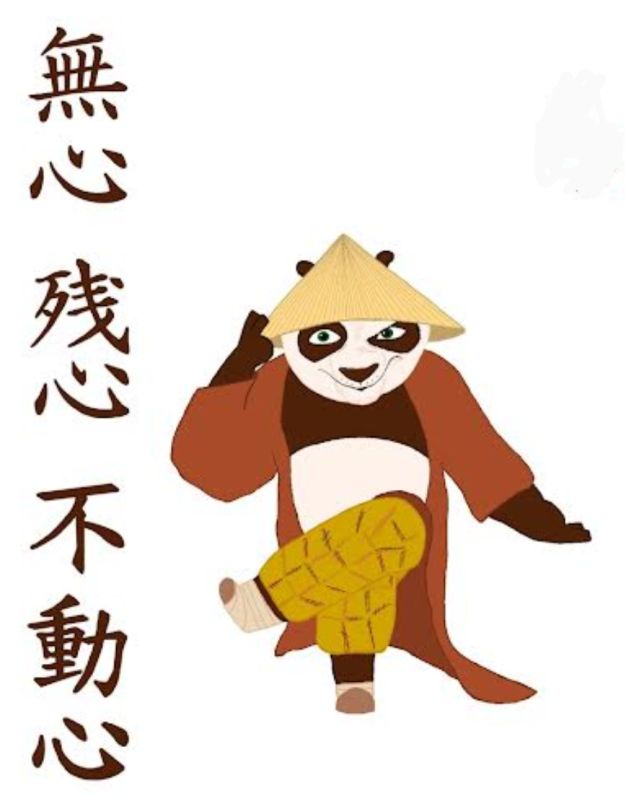Mindfulness
A Martial Arts Mindset Can Bring Clarity to Daily Life
Personal Perspective: Martial arts training can help us be ready mentally.
Posted July 4, 2024 Reviewed by Lybi Ma
Key points
- An imperturbable mindset can help us respond to actual, not falsely perceived, threat.
- The mindfulness in martial arts applies beyond physical exchanges to written and verbal conversation.
- Taking this approach can help us learn to respond effectively and avoid reacting recklessly.
Everybody Was Kung Fu Fighting is a catchy lyric from a timeless '70s song (especially the CeeLo Green and Jack Black cover from Kung Fu Panda), but traditional martial arts training truly is more about navigating aggression and avoiding conflict. This extends beyond the physical to all areas of human interactions. There are a lot of levels on which this works, but a key one is a mindset of equanimity combined with potentiality.
Don't Mind the Immovable
In many martial arts traditions, there are extensive descriptors of mindsets that need to be trained and honed to allow for safe and decisive performance. Descriptions of these mindsets are found in most Chinese, Okinawan, and Japanese traditions. In the Japanese language, there's a whole lot of "shin" going around; where "shin" means mind-thought-heart.
To have an unattached or empty mind is "mushin," an immovable mind is "fudoshin," and a mind alert to opportunity and remaining danger (basically situational awareness) is "zanshin." These three mindsets can be trained and practiced and fluidly bleed into each other. They are trained by both directly focusing or diffusing attention and by adopting physical postures that imbue the mind with the correct "feeling."
Taking a Posture Without Posturing
There's a lot of posturing that goes on in everyday living, conversation, and even self-defense encounters. A very common part of traditional martial arts training is understanding the importance of readiness postures (kamae). These include different ways of standing and holding the arms and legs so that the body is prepared to deliver or respond to attack or defense.
A common readiness posture found in just about every tradition is one is a "middle guard." In this posture, there is even balance between the feet, legs, and arms; they are held towards the midline and upper chest to be ready to move anywhere at any time. Some of these postures will often look outwardly very similar to actual defense responses. But what is going on in the brain is very different.
It is much easier to adopt the physical part of a readiness posture than it is to achieve the key mental state. When performing an actual defense or specific attack, the mind and body are committed to the specific moment and means of action. However, in a readiness posture, the mental focus must be simultaneously diffuse and attentive. This state of mind includes aspects of mushin, fudoshin, and zanshin and is meant to allow you to respond appropriately to whatever unfolds.

The key to this is being ready to respond to everything with everything, but not focused on anything specific. As soon as we frame a specific response we are biasing our ability to generate the appropriate action that will be required. This is not an issue if we guess correctly and the attacker goes where we expect with the attack we've assumed will occur.
But this goes horribly wrong in the very likely event that we don't know what will occur where and the attacker does something we didn't plan for specifically. Assuredly committing to the wrong course of action also takes us out of the present and into the future, which destroys the mindset of equanimity we seek.
The Best-Laid Plan for Everything Is for Nothing at All
This represents another paradox of martial arts training, you train to do all kinds of anything so that you can be ready to do nothing or everything when the threat arises. The only plan for the unexpected is to have no plan at all. Instead, an extensive training background creates a bank of responses we can draw on to appropriately take action. We need to be ready to do the right thing and above all never take action just for the sake of taking action.
Everything we've discussed here has been around martial arts and physical conflict but this can be an effective metaphor for conversation and everyday interactions. When we think we know what's going to happen we bias ourselves and constrain our reactions. Instead, prepare for everything, remain immovable and aware, and respond appropriately. Through extensive training, many different kamae postures are learned in variable contexts to allow for fluidity of application.
Applying this means letting go of preconceptions about what we think we know and how well we think we can control ourselves and others. Too often we think we are responding to a situation when instead we are having rapid (and often wrong) reactions to the perceived intentions of those around us. We can practice and train this, though, and an effective (but not the only) means is traditional martial arts training. Context is everything and it's critical to understand and apply the connection between brain and body, mind, and movement.
This idea remains another example of working from the outside in. It's very difficult to directly try to control your thinking. Sometimes we need a bootstrap to get there. Adopting these physical postures is a way to interrogate our interior to change our mindset by doing something we can see, which is the movements of our arms and legs. We can then affect our processing and our brains as a neurohack to help enable the thinking that we would like.
There's a lot of power that lies within taking no action when others expect action, in saying no words when others expect words. This idea of "wu wei" or natural action by inaction is a pillar of many traditional Chinese and other martial arts coming from Taoism. As Kung Fu Panda's theme songs tells us, "Although the future is a little bit frightening, it's the book of your life that you're writing." Please try to write and live yours deliberately and respond with intention by avoiding reacting recklessly.
(c) E. Paul Zehr (2024)




